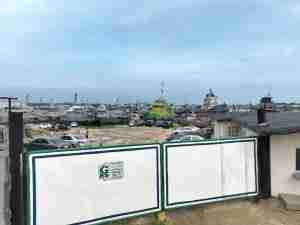The benchmark index for seaborne trade, an indicator of world economic activity, has struggled to recover after touching their lowest since 2008 in February, with only a small, brief spike likely in coming months as Japan rebuilds its crippled economy after Friday's devastating earthquake and tsunami.
That should keep freight costs relatively cheap for major importers such as China and India that are struggling to contain spiralling inflation sparked by record high commodity prices.
"There is as much as a 10 percent difference between demand and supply growth this year," said Rigan Wong, a Hong Kong-based shipping analyst at Citgroup. "Japan alone will not be able to push up demand in line with supply. That just isn't possible."
The Baltic Exchange's Dry Index has plummeted nearly 65 percent in 10 months, trading at 1,533 points on Thursday, as the world's economy has been unable to absorb a fast expanding global fleet. It hit a two-year low of 1,043 last month.
The deadly earthquake, which has killed thousands, damaged numerous power plants, refineries, steel mills and buildings. Recovery and reconstruction efforts will likely take at least five years, with initial cost estimates at $180 billion, or 3 percent of Japan's annual economic output.
Demand for vessels to move coal and iron ore to restore consumption will easily be met by the huge dry bulk fleet, with hundreds of capesizes and panamaxes, the market's largest vessels, already fighting for very limited work.
Surplus Fleet Capcity
"I don't think Japan will affect dry bulk rates all that much. I still think we could see fresh two-year lows," said Janet Lewis, a shipping analyst with Macquarie Securities.
"Through the end of the second quarter, we will see the BDI firming up but probably not a whole lot higher than where we are now. I don't expect we will get above 2,000 anytime soon, maybe we get up to 1,700."
The supply glut was best reflected by the severe downturn in capesize daily earnings, which briefly dipped below $5,000 in February after surging to nearly $60,000 eight months before. Earnings traded at $9,430 on Thursday.
Dry bulk ship owners ramped up orders of vessels before the economic downturn in 2008. It normally takes three years for a ship to be delivered and most of those vessels were now coming online, exacerbating an already oversupplied market.
The world's dry bulk fleet, responsible for shipping iron ore, coal, grains and other commodities, is expected to grow between 11 and 13 percent this year to top an unprecedented 600 million deadweight tonnes, analyst said. That would far outpace demand of between 5 to 8 percent.
Global freight demand has largely been driven by the huge economic growth in China, India and other emerging economies that are now battling to tame the impact of higher commodity prices.
Central banks across Asia are under pressure to act to stave off inflationary pressures as crude oil prices stay near a 2-1/2 year high on unrest in the Middle East. China, India, South Korea, Vietnam and Thailand have raised rates multiple times over the last year.
Shipment to Japan
One bright spot for Japan's crippled infrastructure was that many of its ports were unscathed by the earthquake, providing ample capacity to import coal, and other dry bulk needs.
Only one iron ore and three coal handling ports were damaged, which together represent about 20 million tonnes of capacity for each commodity. Japan had a surplus import capacity of 68 million tonnes for iron ore and 147 million tonnes for coal in 2010, according to ICAP.
South Korea, Russia, Indonesia and other major commodity exporters have pledged to supply the country with extra cargoes of oil, coal and liquefied natural gas.
Yet, more than ports, Japan's ability to absorb supplies because of damaged storage facilities,









